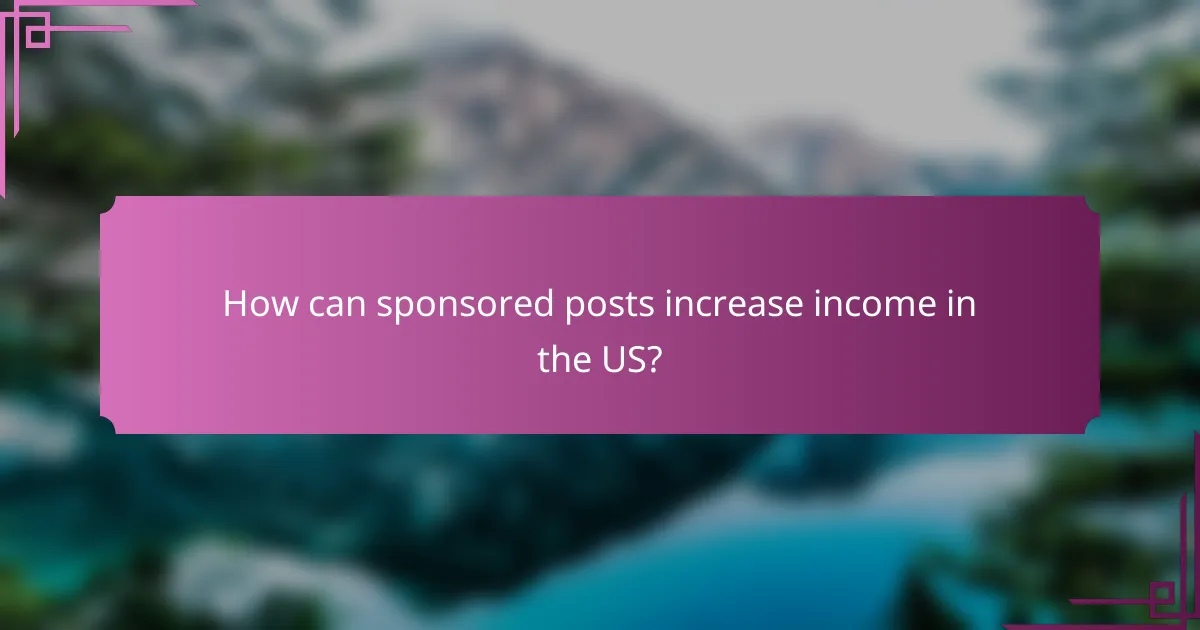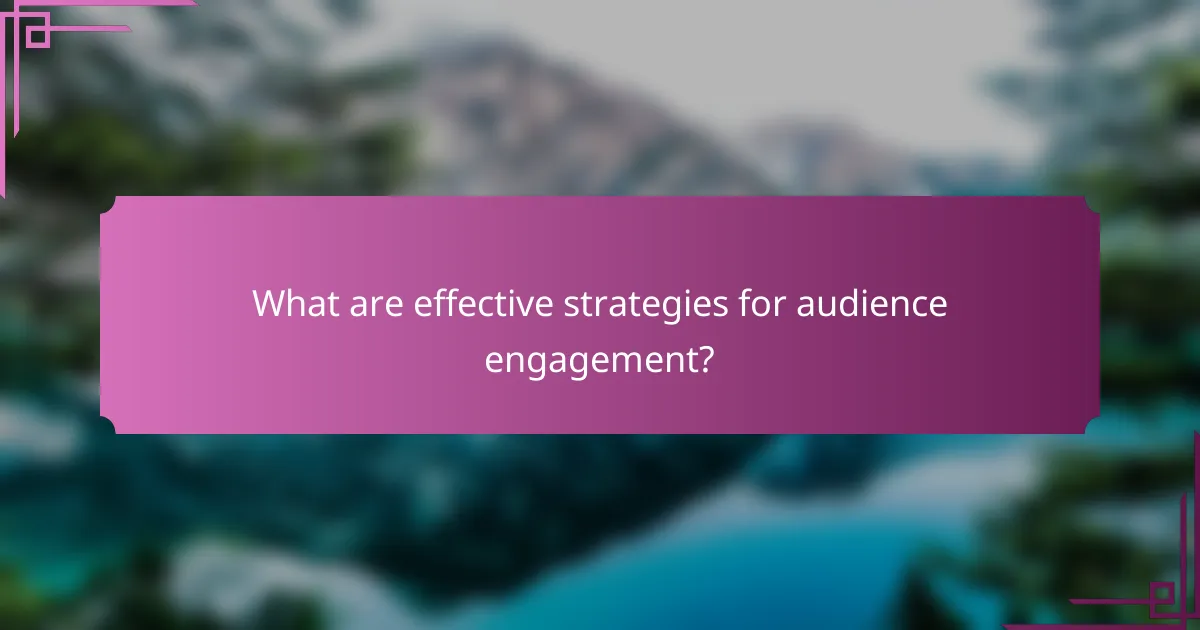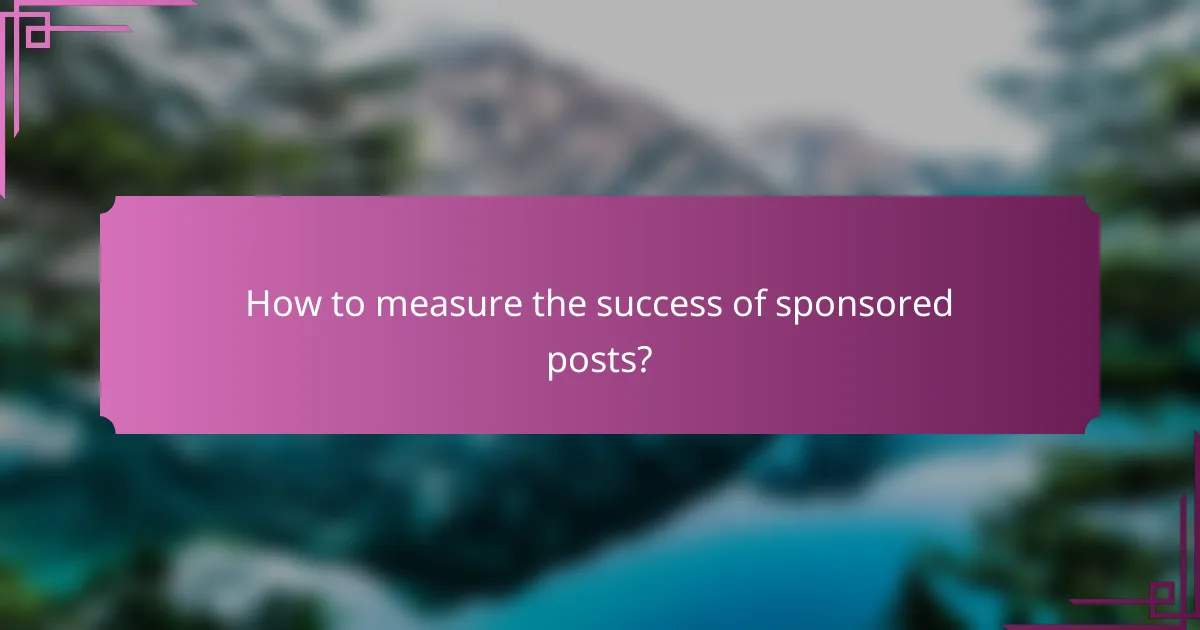Sponsored posts present a valuable opportunity for creators and businesses to enhance their income by forging partnerships with brands. By engaging meaningfully with their audience, content creators can tailor their strategies to not only monetize their platforms but also deliver genuine value to their followers, fostering a loyal community in the process.

How can sponsored posts increase income in the US?
Sponsored posts can significantly boost income for creators and businesses in the US by providing a direct revenue stream through partnerships with brands. By leveraging their audience, content creators can monetize their platforms effectively while delivering value to both their followers and sponsors.
Higher engagement rates
Sponsored posts often lead to higher engagement rates compared to standard content. When followers see brands they trust or products they are interested in, they are more likely to interact with the post through likes, shares, and comments. This increased interaction can enhance visibility and attract more followers.
To maximize engagement, creators should ensure that sponsored content aligns with their audience’s interests. Authenticity is key; posts that feel genuine tend to perform better. For example, a lifestyle influencer promoting a health product should share personal experiences to resonate with their audience.
Increased traffic to websites
Sponsored posts can drive significant traffic to websites, benefiting both the content creator and the sponsoring brand. When a post includes a link to a website, it encourages followers to explore further, leading to potential conversions or sales. This is particularly effective when the content is relevant and appealing to the audience.
To optimize traffic, creators should use clear calls to action in their posts. Phrasing like “Check out the link in my bio for more details” can guide followers effectively. Additionally, tracking metrics such as click-through rates can help assess the effectiveness of sponsored content.
Enhanced brand partnerships
Engaging in sponsored posts can lead to enhanced brand partnerships, opening doors for future collaborations. Brands often seek long-term relationships with influencers who demonstrate the ability to engage their audience effectively. This can result in more lucrative deals and exclusive opportunities.
Creators should focus on building a strong personal brand and maintaining consistent quality in their content. Networking with brands and attending industry events can also facilitate connections that lead to fruitful partnerships. Remember to communicate openly with brands about expectations and deliverables to foster trust and collaboration.

What are effective strategies for audience engagement?
Effective strategies for audience engagement focus on creating meaningful interactions that resonate with your target audience. By understanding their preferences and behaviors, you can tailor your content and outreach efforts to foster a loyal community.
Targeted content creation
Targeted content creation involves developing material that speaks directly to the interests and needs of specific audience segments. This can be achieved by conducting audience research to identify demographics, preferences, and pain points.
Consider using surveys or analytics tools to gather insights. For example, if your audience is primarily young professionals, create content that addresses their career development or work-life balance challenges.
Utilizing social media platforms
Social media platforms are powerful tools for engaging with your audience in real-time. By selecting the right platforms—such as Instagram for visual content or LinkedIn for professional networking—you can reach your audience where they are most active.
Regularly posting updates, responding to comments, and participating in discussions can enhance your visibility. Aim for a consistent posting schedule, ideally several times a week, to maintain engagement and keep your audience informed.
Incorporating multimedia elements
Incorporating multimedia elements like videos, infographics, and podcasts can significantly enhance audience engagement. These formats can make complex information more digestible and appealing, capturing attention more effectively than text alone.
For instance, a short video summarizing a blog post can attract viewers who prefer visual content. Aim to include at least one multimedia element in your posts to diversify engagement and cater to different audience preferences.

What platforms are best for sponsored posts?
The best platforms for sponsored posts depend on your target audience and content type. Instagram, Facebook, and LinkedIn each offer unique advantages for different engagement strategies and demographics.
Instagram for visual content
Instagram excels in visual storytelling, making it ideal for brands that rely on eye-catching images or videos. Sponsored posts here can include photos, videos, and stories that resonate with users, often leading to higher engagement rates.
To maximize impact, focus on high-quality visuals and authentic captions. Collaborating with influencers can also amplify reach, as they often have established trust with their followers.
Facebook for broad reach
Facebook offers extensive reach, making it suitable for brands targeting diverse demographics. Sponsored posts can be tailored using detailed audience targeting options, ensuring your content reaches the right users based on interests, behaviors, and location.
Consider using a mix of image, video, and carousel ads to engage users effectively. Regularly analyze performance metrics to refine your strategy and optimize ad spend for better results.
LinkedIn for B2B engagement
LinkedIn is the go-to platform for B2B sponsored posts, allowing businesses to connect with professionals and decision-makers. Sponsored content can include articles, infographics, and case studies that establish authority and drive engagement.
When creating sponsored posts on LinkedIn, focus on industry-specific insights and professional development topics. Networking with industry leaders and participating in relevant discussions can enhance visibility and credibility.

What criteria should be considered for selecting sponsored post partners?
Selecting sponsored post partners requires careful consideration of several key criteria to ensure alignment with your audience and brand values. Factors such as audience alignment, engagement metrics, and brand reputation play crucial roles in determining the effectiveness of these partnerships.
Audience alignment
Audience alignment is about ensuring that the partner’s audience matches your target demographic. This can significantly enhance the relevance of the sponsored content and improve engagement rates. Look for partners whose followers share similar interests, age groups, and geographical locations.
To assess audience alignment, consider conducting surveys or analyzing social media insights. A good rule of thumb is to aim for at least 70% overlap in audience characteristics to maximize impact.
Engagement metrics
Engagement metrics are essential for evaluating a potential partner’s effectiveness in reaching and resonating with their audience. Key metrics to consider include likes, shares, comments, and overall interaction rates on previous sponsored posts. High engagement indicates that the audience is not just passive but actively interested in the content.
When reviewing engagement metrics, look for consistent performance over time rather than isolated spikes. A partner with an average engagement rate of 2-5% is generally considered effective, but this can vary by industry and platform.
Brand reputation
Brand reputation is crucial for maintaining your own brand’s integrity. Partnering with brands that have a positive reputation can enhance your credibility, while associations with brands that have faced controversies can harm your image. Research potential partners through reviews, testimonials, and their history of collaborations.
To gauge brand reputation, consider checking their social media presence, customer feedback, and any past controversies. A strong reputation often correlates with a loyal audience, which can lead to better performance for your sponsored posts.

How to measure the success of sponsored posts?
Measuring the success of sponsored posts involves evaluating key performance indicators such as conversion rates, engagement statistics, and audience feedback. These metrics provide insights into how well the posts resonate with your audience and contribute to your overall marketing goals.
Tracking conversion rates
Conversion rates indicate the percentage of users who take a desired action after interacting with your sponsored post, such as making a purchase or signing up for a newsletter. To track this, use tools like Google Analytics to set up conversion goals and monitor the traffic generated from your posts.
A good conversion rate for sponsored posts typically ranges from 1% to 5%, depending on the industry and audience. Regularly analyze these rates to identify which posts drive the most conversions and adjust your strategy accordingly.
Analyzing engagement statistics
Engagement statistics measure how users interact with your sponsored posts, including likes, shares, comments, and click-through rates. High engagement often indicates that your content resonates well with the audience, which can lead to increased brand awareness.
Utilize social media analytics tools to gather data on these metrics. Aim for a click-through rate of at least 2% to 3% for effective sponsored content. Compare engagement across different posts to discover what types of content perform best.
Monitoring audience feedback
Audience feedback provides qualitative insights into how your sponsored posts are perceived. This can include comments on social media, direct messages, or surveys asking for opinions on the content. Listening to your audience helps you understand their preferences and improve future posts.
Encourage feedback by asking questions in your posts or running polls. Pay attention to recurring themes in the feedback, as they can highlight areas for improvement or successful strategies worth repeating.

What are common pitfalls in sponsored posts?
Common pitfalls in sponsored posts include failing to align content with audience interests and excessively promoting products. These mistakes can lead to disengagement and reduced effectiveness of the post.
Neglecting audience preferences
Understanding audience preferences is crucial for the success of sponsored posts. If the content does not resonate with the target demographic, engagement rates will likely drop. Conducting surveys or analyzing past post performance can help identify what your audience values.
For example, if your audience prefers informative content over promotional material, focus on providing valuable insights related to the sponsored product. This approach fosters trust and encourages interaction.
Over-promoting products
Over-promoting products can alienate your audience and diminish the credibility of your posts. Striking a balance between promotion and genuine content is essential. Aim for a ratio where the sponsored content complements your regular posts rather than dominating them.
A good practice is to limit promotional content to about 20-30% of your overall posts. This way, you maintain audience interest while still fulfilling sponsorship obligations. Consider integrating product mentions within helpful tips or relatable stories to make them feel more organic.

